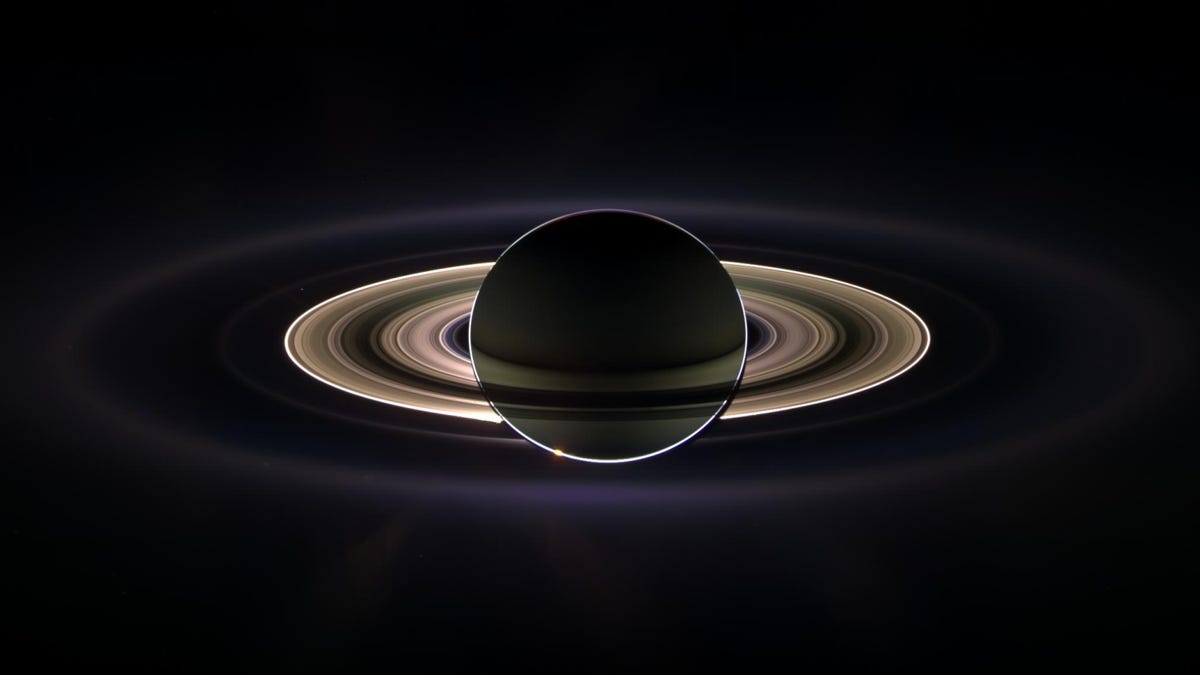Cassini's final mission: Crashing into Saturn
The Saturn probe has officially commenced its countdown for its last mission, showing us intimate details of Saturn as it dies.
It won't be happening until next year, but now is the time to start saying goodbye to Cassini. Last week, the countdown clock for the Saturn probe's final plunge was installed and started. In a year's time, the mission will commence.
Cassini launched in 1997 and entered Saturn's orbit in 2004, and has spent the years since collecting more information on the ringed planet than ever before. By its tenth anniversary in orbit in 2014, it had sent back over 500 GB of data, which contributed to over 3,000 scientific papers. It discovered seven new moons and invaluable information about its rings, an active laboratory demonstrating how moons and planets form.
It revealed that beautiful Titan has rain, rivers, lakes and seas and a nitrogen-rich atmosphere similar to what Earth might have had, and studied the eerie radio-wave patterns, revealing that they are not related to Saturn's inner rotation (although what they are related to remains yet to be discovered). And it showed us Saturn's magnificent polar hexagon.
The final mission is, fittingly, called the Grand Finale, and there's a lot more involved than simply falling down. As the probe gets closer and closer to Saturn, it will have an unprecedented opportunity to study its minutiae, as detailed by NASA's Linda Spilker at the European Geosciences Union General Assembly last week.
First, Cassini is going to conduct a series of orbits just outside Saturn's outermost F ring, repeatedly circling the poles for a final look at that hexagon. During this phase of the mission, it will also probe the plume of moon Enceladus' active geysers, and perform 12 close fly-bys of glittering Titan.
When this phase is complete, Cassini will swoop in close, starting a series of 22 daring orbits between Saturn and its innermost D ring, from April 2017. Cassini will be closer than any spacecraft has ever been to Saturn, just 64,000 kilometres (40,000 miles) from its centre (Saturn has an equatorial diameter of 75,000 miles).
From this vantage point, Cassini will be able to make detailed maps of Saturn's gravity and magnetic fields, which will reveal a lot about the planet's internal structure, and hopefully help figure out how fast the interior is rotating under all that gas. It will also be able to examine much more closely Saturn's rings, sampling the icy ring particles being pulled into the planet's atmosphere.
Diagram showing Cassini's daring swoops between Saturn and its innermost ring.
And, of course, we'll get to see all sorts of wonderful, detailed, up-close photos of Saturn's rings and clouds.
And when all this is said and done, On September 15, 2017, Cassini will plunge through Saturn's atmosphere, its clouds and fog, collecting and sending data right up until its final minutes.
Don't cry for Cassini, though. Its mission has already been extended twice, far exceeding its four-year expectation, and its running out of fuel. Leaving it in unfueled orbit around the planet risks crashing into Enceladus or Titan, the potentially life-sustaining liquid water on which could be contaminated by microbes that could still be living on Cassini, even after 20 years.
And its swansong will be a thing of wonder: a treasure trove of data that will (hopefully) keep Saturn scientists busy for years to come.


